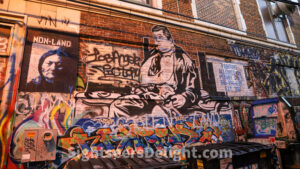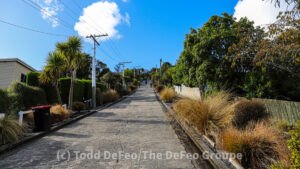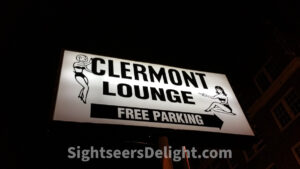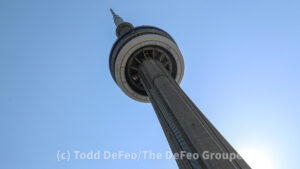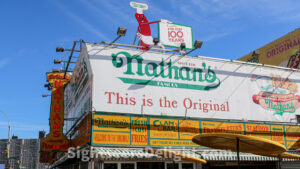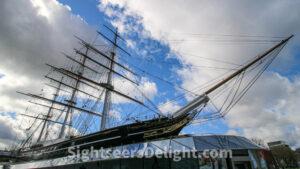The Rapid City alley between Main and St. Joseph streets and connecting 6th and 7th streets isn’t some sort of tribute to New York City of the 1970s and 1980s. Instead, Art Alley is a place where established, burgeoning and wannabe artists put up their best work. Artists can procure a permit to paint on buildings’ walls along the alley, making it an ever-changing public art display.
The mound includes the ashes of 70,000 of the people who were killed in the bombing, a stark reminder of the magnitude of that day.
Opened in 1965, the Clermont Lounge has the distinction as the first and longest continually operating strip club in Atlanta. The establishment is located in the basement of what was once the Clermont Motor Hotel. As Wikipedia notes: “The Clermont is perhaps best known for featuring some dancers who do not meet the traditional physical standards for strippers, the most famous of whom is Blondie, noted for her ability to crush empty beer cans between her breasts as well as for her poetry.”
CN Tower looms large over the city of Toronto. The idea for the iconic communications and observation tower dates to the late 1960s when Canadian National Railway wanted to build a structure that would, in part, symbolize the railroad’s strength. The tower, built on former railroad right-of-way, opened to the public in June 1976. Canadian National sold the tower in 1995. Today, the tower is the centerpiece of the entertainment center along Front Street. The tower, which is home to a rotating restaurant in addition to the observation deck, is within walking distance of the Rogers Center, Union Station and the 17-acre Roundhouse Park.
The Conch Tour Train is a popular tourist attraction in Key West, Florida, that takes visitors on a journey through the island’s rich history and culture. The train travels through the historic Old Town district, passing by notable landmarks such as the Ernest Hemingway Home and Museum, the Key West Lighthouse, and Mallory Square. Along the way, a knowledgeable tour guide shares fascinating stories and interesting facts about the island’s past, including its colorful characters, architecture, and maritime heritage. The Conch Tour Train is a fun and educational experience that provides visitors with a unique way to explore Key West.
This post partially incorporates text generated with GPT-3, OpenAI’s large-scale language-generation model.
What is Coney Island and how do you describe it in 100 or so words? It’s a neighborhood, an entertainment district and a popular tourist destination. Maybe more than anything, Coney Island is quintessentially New York City. It transformed into a seaside resort by the middle of the 19th century, and amusement parks followed a few years later. While Coney Island’s popularity waned following World War II, the area has experienced a resurgence in recent years, thanks in part to the opening of the MCU Park in 2001.
In some ways, Cuba Street is the heart of Wellington. The Bohemian street is home to what is usually described as an eclectic mix of shops, cafes, bars and restaurants. The thoroughfare is named in honor of early New Zealand Company barque, which arrived in Wellington on Jan. 3, 1840. The city closed the middle section of the street to traffic in 1969, making it a pedestrian-only mall, one of the busiest hubs for pedestrians in Wellington. Since 1995 Cuba Street has been registered as a historic area under the Historic Places Act 1993.
The Curacao Ostrich Farm may seem like one of the most random attractions on Curaçao, but it is actually one of the more interesting destinations on the island. Located on the road to Groot St. Joris in Santa Catharina, the farm is home to roughly 200 adult ostriches. Guests can take a tour of the grounds, feed an ostrich and even ride one. There is also a restaurant on site that serves up food made from ostrich meat. Of course, the gift shop sells souvenirs made from ostrich bones and eggs.
The British clipper Cutty Sark was built in Dumbarton, Scotland, in 1869 for the Jock Willis Shipping Line as one of the last tea clippers. The vessel was built at the end of a long design development period, which halted as sailing ships gave way to steam propulsion. The Cutty Sark spent just a few years on the tea trade before turning to the wool trade yo and from Australia and held the record time to Britain. In 1895, the Portuguese company Ferreira and Co. purchased the vessel and renamed it Ferreira. It worked as a cargo ship until in 1922 when retired sea captain Wilfred Dowman purchased it.

